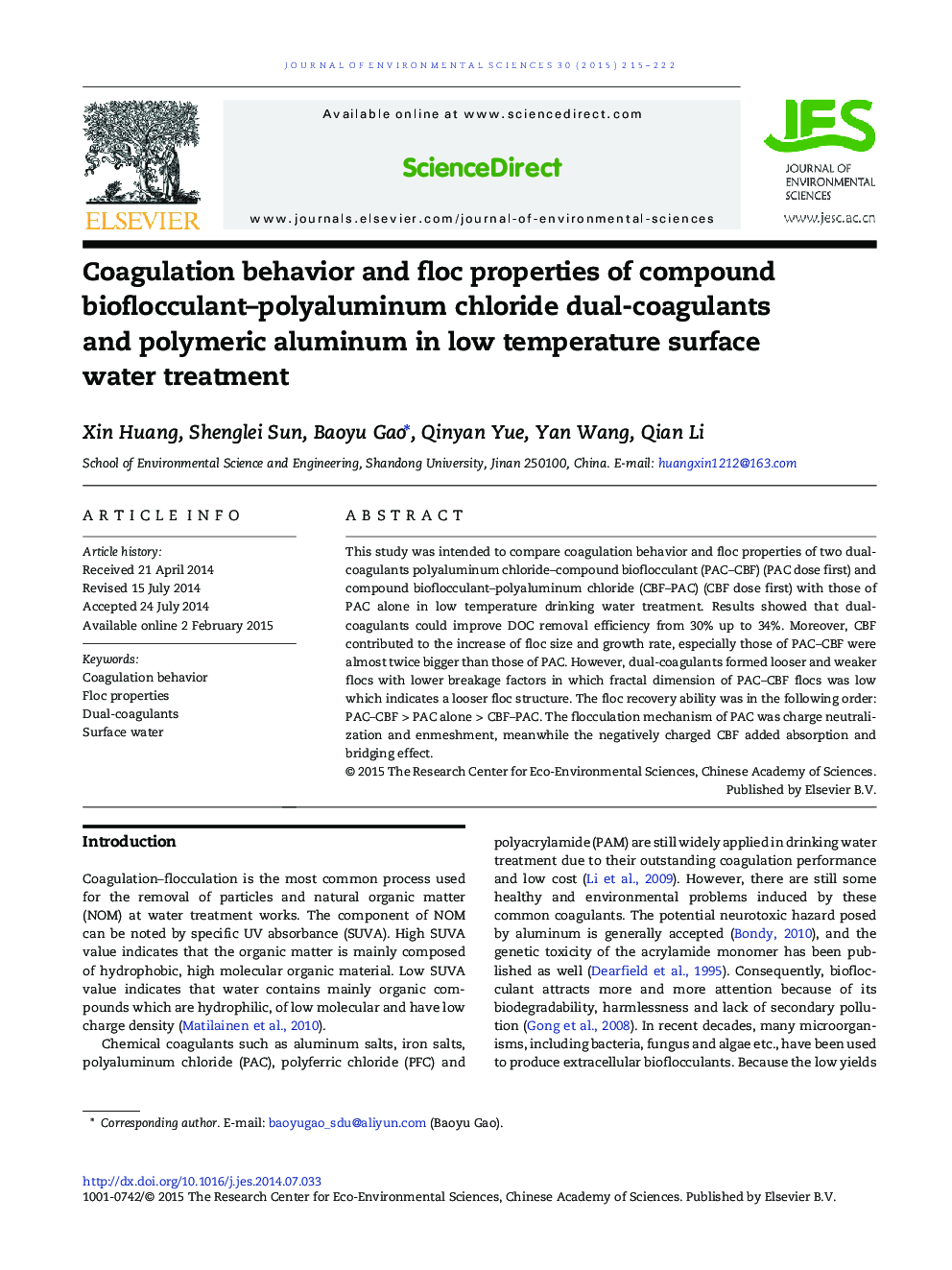| Article ID | Journal | Published Year | Pages | File Type |
|---|---|---|---|---|
| 4454122 | Journal of Environmental Sciences | 2015 | 8 Pages |
This study was intended to compare coagulation behavior and floc properties of two dual-coagulants polyaluminum chloride–compound bioflocculant (PAC–CBF) (PAC dose first) and compound bioflocculant–polyaluminum chloride (CBF–PAC) (CBF dose first) with those of PAC alone in low temperature drinking water treatment. Results showed that dual-coagulants could improve DOC removal efficiency from 30% up to 34%. Moreover, CBF contributed to the increase of floc size and growth rate, especially those of PAC–CBF were almost twice bigger than those of PAC. However, dual-coagulants formed looser and weaker flocs with lower breakage factors in which fractal dimension of PAC–CBF flocs was low which indicates a looser floc structure. The floc recovery ability was in the following order: PAC–CBF > PAC alone > CBF–PAC. The flocculation mechanism of PAC was charge neutralization and enmeshment, meanwhile the negatively charged CBF added absorption and bridging effect.
Graphical abstractFigure optionsDownload full-size imageDownload as PowerPoint slide
